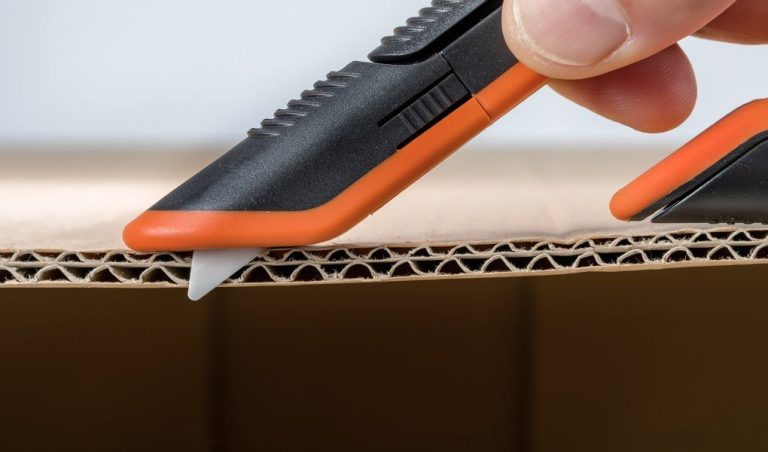Do You Need Planning Permission For A Kiln?
What is a Kiln?
A kiln is a furnace or oven used for burning, baking, or drying something, especially for firing pottery, calcining limestone, or baking bricks (Kiln Definition & Meaning – Merriam-Webster, Meaning of kiln in English – Cambridge Dictionary, KILN Definition & Usage Examples – Dictionary.com). Kilns are enclosed chambers made from materials such as brick, ceramics, or metal that can withstand high temperatures. The purpose of a kiln is to achieve and maintain high, even heats for the process being carried out inside. Kilns allow control over heating temperatures and heating times which is critical for achieving the physical and chemical transformations in materials like clay, limestone, and bricks.
There are several main types of kilns used for different applications:
- Pottery kilns used for firing clay wares like cups, plates, and vases to harden them.
- Brick kilns used for baking clay bricks to strengthen them before use in construction.
- Lime kilns used to extract lime from limestone via calcination which converts the limestone to quicklime.
- Glass kilns used for melting glass materials like soda, limestone, and sand to produce glass products.
- Metal annealing kilns used to heat metal objects to make them more ductile and workable.
Kilns allow precise control over high temperatures which makes them indispensable for crafting and manufacturing applications where specific heating conditions are needed to achieve the desired chemical and physical transformations in different materials.
Types of Kilns
Kilns come in a variety of types depending on their fuel source and intended use. Some of the most common types of kilns include:
Electric Kilns
Electric kilns use heating elements powered by electricity to fire ceramics or glass. They allow for precise temperature control and are relatively easy to operate. Electric kilns are popular for ceramics, glass fusing, enameling, and heat treating. They can be used in homes with proper ventilation (cite: https://kilnarts.org/education/kilns-101/what-is-a-kiln/types-of-kilns/).
Gas Kilns
Gas kilns use natural gas or propane to generate heat. They provide efficient, uniform heating. Gas kilns allow good temperature control and are often used for industrial purposes such as brick or cement firing. They need proper ventilation to remove combustion byproducts (cite: https://kilnfrog.com/pages/kiln-types).
Wood-Fired Kilns
Wood-fired kilns use wood as the fuel source. The burning wood generates heat and ash that reacts with and adds visual effects to the surface of ceramics. Wood kilns provide unique atmospheric results but do not allow precise temperature control.
Kiln Location
The ideal location for a kiln depends on several factors. An indoor location like a basement or garage is common for small home kilns. Some key considerations for indoor kiln placement include:
- Having adequate space for the kiln and workspace
around it. - Ensuring good ventilation to remove fumes.
- Keeping it away from flammable materials.
- Having access to electricity.
Larger electric or gas kilns may require a separate detached structure like a shed or outbuilding. This provides insulation from the home and allows for proper ventilation. Gas kilns in particular require careful attention to ventilation. According to the Ceramics Field Guide, the kiln room should exchange its air volume at least once per minute.
Outdoor locations are generally not recommended, as exposure to weather can damage the kiln. But a covered, open-sided structure could work for a small hobby kiln. The main drawbacks are exposure to moisture and difficulty controlling the firing atmosphere.
Safety and Environmental Considerations
Operating a kiln comes with some important safety considerations. The high temperatures used can pose fire risks, release harmful fumes, and generate excessive heat if not properly managed.

Fire is one of the most serious risks when operating a kiln. Kilns can reach extremely high temperatures, so it’s critical they are placed an adequate distance from combustible materials. According to Kiln Safety in Schools, kilns should be located at least 18 inches from noncombustible surfaces and 36 inches from combustible surfaces [1]. Proper clearance must be maintained around the kiln to prevent fires.
The fumes released when firing a kiln can also be a concern. These may contain carbon monoxide, sulfur dioxide, heavy metals, and other potentially hazardous substances. Proper ventilation is essential – kilns should be vented outside or used in well-ventilated areas [2]. Respirators may also be warranted in some situations.
Additionally, kilns generate significant radiant heat. Caution should be used when looking inside a hot kiln, as the infrared radiation can damage eyes over time. Kiln operators should utilize protective eyewear when viewing firing kilns for extended periods [3].
Planning Permission Basics
Planning permission refers to approval from the local planning authority to carry out building work or change the use of land or buildings. It ensures development complies with national and local planning policies and regulations (Wikipedia).
In most cases, planning permission is required before starting construction projects including:
- Building new houses or other structures
- Extensions, loft conversions, conservatories
- Changes to the exterior of a home or building
- Demolition of walls, buildings or structures
- Construction of decks, garages, swimming pools
- Changes of use from residential to commercial
Planning permission ensures developments are safe, respect local character, and don’t negatively impact neighbors or the environment. It aims to promote sustainable growth rather than haphazard building (Homebuilding). Most construction projects require approval but there are exceptions for minor works.
Rules for Residential Properties
There are some key regulations to be aware of when installing a kiln in a residential property. According to research from the Ceramic Arts Daily forums, it’s important to check with your insurance company before installing a kiln, as they may have concerns about fire safety [1]. You’ll also want to review your local zoning laws and homeowner association rules to ensure kilns are permitted [2]. Many residential areas have restrictions on operating commercial equipment or activities that produce smoke or odors.
In general, small hobby kilns for personal use are more likely to be allowed. It’s wise to inform your neighbors and mitigate any potential disturbances. Proper ventilation and filtration systems can help reduce emissions. You may need permits for electrical and building modifications. It’s best to research thoroughly and get the necessary approvals before installing a kiln at home.
Rules for Commercial or Industrial Properties
Businesses that want to install a kiln on their property typically need to obtain planning permission first. This applies to properties zoned for commercial or industrial use.
According to arbtalk.co.uk, permanent kilns for commercial purposes usually require planning approval, even on a croft property. The specific regulations depend on factors like the kiln’s size, location, and potential environmental impact.
Some key considerations for businesses planning a kiln installation:
- The kiln may need an environmental permit for air emissions.
- Commercial kilns often require dedicated ventilation and chimney systems.
- Local zoning laws may restrict kilns in certain business districts.
- The kiln design must meet safety standards for fire prevention.
- Nearby residents could object to noise, smoke, or other impacts.
To avoid delays, businesses should consult with local planning authorities first about permit requirements and restrictions for kilns. With proper planning permission, commercial and industrial sites can safely operate kilns for drying, firing, and other applications.
Permitted Development Rights
In many cases, you may be able to install a kiln without needing to apply for planning permission. This is known as “permitted development.” Permitted development rights allow certain building works and changes of use to be carried out without going through the formal planning process.
For example, according to planning guidance, installing a kiln in an existing outbuilding or shed would likely be permitted development, as long as the outbuilding already exists and is not extended beyond its original boundaries (1). The kiln installation cannot involve the construction of a flue or chimney on the outbuilding either. Generally, permitted development allows minor alterations to existing buildings as long as they are not enlarged.
You can also install a kiln inside your house without planning permission under permitted development rights, as long as it meets certain requirements. The key factors are that the kiln must not require any building alterations or extensions, and it cannot be used for business purposes (2). Installing a kiln solely for your own personal, non-commercial use would likely be permitted development.
It’s worth noting that permitted development rights can vary depending on your local authority. Always check with your local planning department to confirm if a kiln installation qualifies for permitted development in your specific area and situation.
(2) https://community.ceramicartsdaily.org/topic/38283-legalities-of-installing-a-kiln/
Applying for Planning Permission
The process for applying for planning permission for a kiln generally involves the following steps:
1. Check your local authority’s website for information on applying for planning permission. Each council will have their own specific requirements and application forms.
2. Determine if you need full planning permission or can apply for permitted development rights. Permitted development may allow small domestic kilns under certain conditions without full planning approval.
3. Prepare the necessary application materials – forms, drawings, plans, etc. Most councils require a site plan, drawings showing kiln design/location, and details on the kiln’s purpose and proposed use.
4. Submit the completed application with the required fee to your local planning authority. Fees vary based on the type and scale of development.
5. The local authority will review the application and make a decision, generally within 8-12 weeks. They will take into account factors like kiln size, location, environmental impact, and health and safety.
6. If approved, you will receive planning permission, subject to any conditions placed on the consent. If rejected, you can appeal the decision.
It’s recommended to check with your local planning office early in the process, as specific rules can vary across different council areas. The planning portal website also has useful guidance on the application process.
Some key requirements that planning authorities commonly consider for kiln applications include noise, air emissions, fire safety, energy efficiency, and visual impact.
Conclusions
In summary, whether or not you need planning permission for a kiln depends on several factors:
– If the kiln is for personal, non-commercial use in a residential property, you may not need planning permission thanks to permitted development rights. However, there are still rules around the kiln’s size and location that must be followed.
– For commercial or industrial properties, planning permission is usually required for kilns unless they meet very specific criteria. The process involves submitting an application with details on the kiln to your local authority.
– Environmental factors like air pollution and fire safety must always be considered when installing a kiln, regardless of whether planning permission is needed. Proper ventilation, insulation, and nearby fire extinguishers are recommended.
– It is advisable to check with your local planning department before installing a kiln if you are unsure whether permission is required. They can provide guidance based on your specific situation.
By understanding the planning permission requirements and considerations for kilns, you can ensure your installation follows regulations and remains safe.



